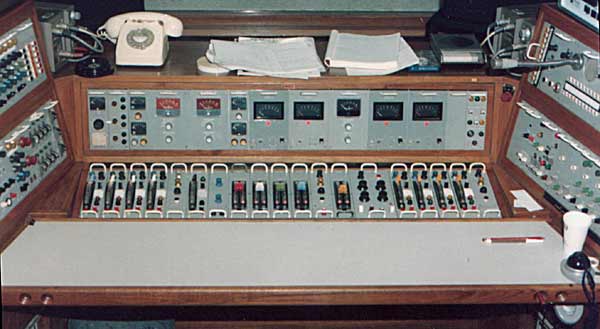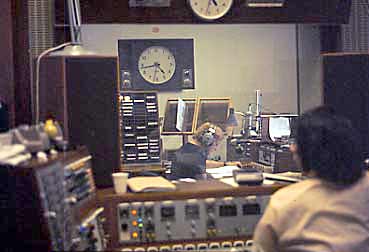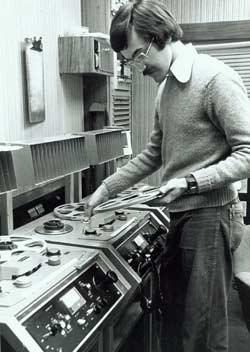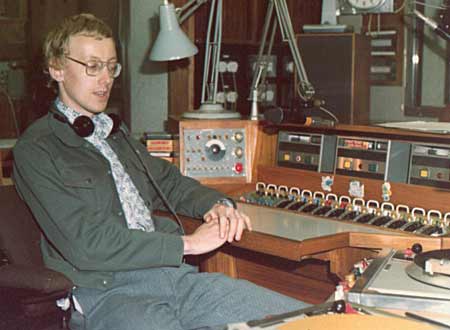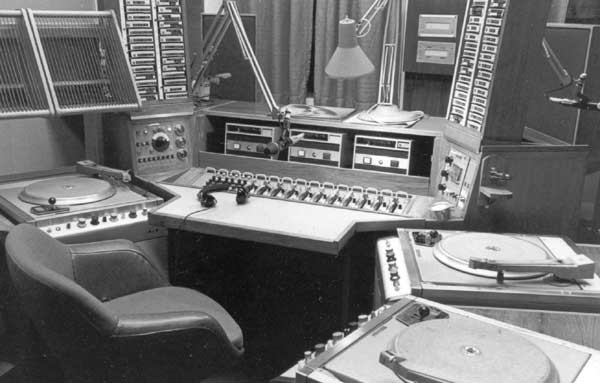The Type D con desks were, I think, unique to London Control Room. There were
six, arranged in a semi-circle A to F. A was for Radio 4, B and C for Radio
1, D and E
(above) for Radio 2 and F for Radio 3.
B was tiny and was where Noel Edmonds, Paul Burnett, Johnnie Walker and Alan
Freeman broadcast from. C
(right) was famous for Tony Blackburn (midmorning),
DLT and David Hamilton as well as John Peel. I remember doing Saturday afternoon
rock shows in B (on VHF) with Fluff when he had the first stereo spotmaster
cart machine - the normal installation was mono Plessey CT80 machines. I also
remember doing the Top 40 in B with Tom Browne when the operators played the
jingles in off reels of tape. This was tricky, as they came off Studer B67s
which were prone to start and then....stop. To make life even more difficult,
on the tape were two versions of each number - a slow and a fast and you only
used one. So you had to remember to wind through the one you hadn't used,
or not if you had used the second of the pair. It took real concentration
to get the whole Top 40 right. But he was such a nice bloke even if you cocked
up - and I did.
We loved the type D desks. They were two box studios with classic BBC Langham
woodwork, where the DJ's desk fed its channels into the cubicle's group faders
to provide separate level control of carts, grams, diverted tapes and mics.
Basically the studio had 3 Gates turntables, 3 cart machines (Plessey, then
later stereo ITC), 2 mic channels (AM9/11 actually sited in the cubicle desk)
and 3 tape channels diverted from the cubicle. The mics were invariably D202s.
The quadrant faders opened towards the operator and the DJ had no level control
but could add echo to any channel with assistance from the cubicle (PA8 315
modules). There was a crude spring and a bay-mounted Ferrograph Series 7 with
a loop cartridge for tape echo. Cassette machines were used as reference recorders,
replacing the more cumbersome system used during the Type B years.
right: Phil Hughes tries the presenter's chair
in Con E.
below: Presenter's desk.
